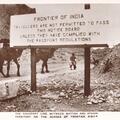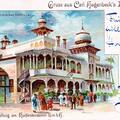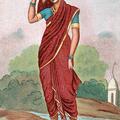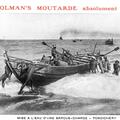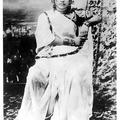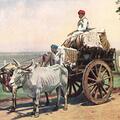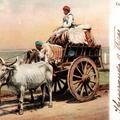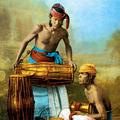Japanese Explorer on Camel
It was not just European and American tourists who came to India; this unusual postcard shows a Japanese traveler on a camel with the guide helpfully holding up a Japanese flag. The camel bags still have English names on them though.

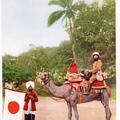
![Hornby Road & the Floral Fountain, Bombay [message] Hornby Road & the Floral Fountain, Bombay [message]](https://www.paperjewels.org/sites/default/files/styles/square_thumbnail/public/slides/hornby-road-bombay.jpg?itok=q84oLAZP)
